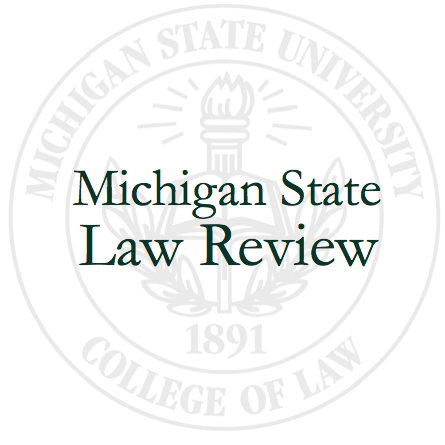The Endless Waltz: Article III Standing and Environmental Conflicts
By: David Sheaffer
Few areas of the law grapple with the constitutional limitations of our judiciary as often as disputes over pollution and environmental regulation. In fact, environmental litigants and the standing doctrine have paired off in an endless waltz for well over a century. It comes as little surprise that some of the most interesting and groundbreaking decisions to shape the limits of Article III standing have been, and continue to be, environmental conflicts.
The Supreme Court’s decision in Massachusetts v. EPA, 549 U.S. 497, 127 S. Ct. 1438 (2007), arguably lowered the standing requirements for quasi-sovereign plaintiffs. The fundamental elements of standing remain unchanged: 1) actual or imminent injury, (2) a traceable causation, and (3) redressability. But, following Massachusetts, scholars and practitioners alike have speculated whether the relaxed requirements in that case would carry through to private parties. In his 2012 article, Standing for Private Parties in Global Warming Cases: Traceable Causation Does Not Require Proximate Causation, 2012 Mich. St. L. Rev. 869 (2012), Professor Bradford C. Mank argued that in a post Massachusetts world, proof of proximate causation is an unnecessarily high hurdle to achieve standing in climate change suits.
Professor Mank critically analyzed the Massachusetts opinion, as well as other significant climate change cases following in its wake. He logically asserted that whether plaintiffs have standing should be addressed before, and separately from, the merits of the dispute. Further, the constitutional requirement of a traceable causal link is best understood as a lesser burden than traditional proximate causation. He opined that applying a less restrictive standard for causation would still preclude duplicative or improbable suits, while allowing easier access to the courts for private parties alleging individualized damages caused by greenhouse gas emissions.
To date, courts have been far from consistent in their interpretation of Massachusetts’ standing language, and even less consistent in adopting the relaxed standard advocated for by Professor Mank. For example, the Ninth Circuit in Washington Environmental Council v. Bellon, 732 F.3d 1131 (9th Cir. 2013), granted summary disposition in favor of the state defendants concluding the special solace granted in Massachusetts did not extend to private parties. Thus, the evidence was insufficient to satisfy the standing trinity.
It is noteworthy that the Bellon court did not dispute the gravity or existence of the alleged injuries, but nevertheless, the plaintiffs could not paint a traceable causal link to the court’s satisfaction. Specifically, the court held that the plaintiffs offered mere “vague, conclusory statements that the Agencies’ failure to set [Reasonably Available Control Technology] standards” under the Clean Air Act contributed to private emissions, and thus contributed to climate change causing the alleged injuries. Id. at 1142. The injury was accepted as pled, the emissions undeniably present, and the absence of regulation undisputed, but causation was still too attenuated. Thus, while acknowledging the near insurmountable burden placed on plaintiffs in a climate change action, the court dismissed the case for lack of standing.
However, arriving at the court on a motion to dismiss this year, an Oregon magistrate judge found standing for a group of private citizens and denied a motion to dismiss despite the generalized nature of their injury and a tenuous causal chain. Juliana v. United States, No. 6:15-cv-1517-TC, 2016 U.S. Dist. LEXIS 52940 (D. Or. Apr. 8, 2016) (Coffin, Mag. J. recommendation). As advocated by Professor Mank, standing in this case was analyzing at the early stage of dismissal and without wading into the merits of the claims. Despite the undeniable necessity of numerous third party actions, the court found it “sufficient that [the] EPA's action/inaction with respect to the regulation of greenhouse gases allegedly results in the numerous instances of emissions that purportedly cause or will cause the plaintiffs harm.” Id.at *19. As such, the generalized pleadings were more than sufficient to paint a traceable causal link.
One possible explanation for the disparate treatment may be that the Juliana injury was framed as constitutional as opposed to procedural like in Bellon. Alternatively, the court may be embracing the liberal interpretation of Massachusetts and the traceable causation element articulated by Professor Mank. Whatever action the District Court decides to take with regard to this motion, the case will almost certainly appear on the docket of the Ninth Circuit. As climate degradation cases continue to rise, standing jurisprudence in the realm of environmental litigation will continue to evolve. But, whatever the result in this case, environmental and constitutional law are likely to dance side by side before our courts long into the future.
